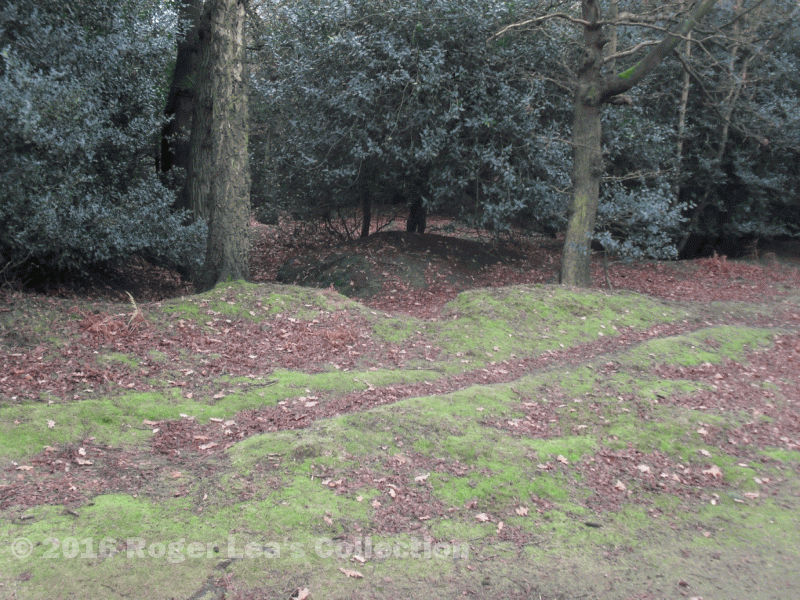A feature of Sutton Park, marked on the Ordnance Survey map as “earthwork”, has long been known as the Ancient Encampment. Did our prehistoric forebears fight off their attackers here, as imagined by some writers? The answer is to be found in a new book by the City Planning Archaeologist, Mike Hodder, The Archaeology of Sutton Park.
Since 1977 Mike has been studying the archaeology of Sutton Park - his work on the supposed cooking site near Streetly, and on the boundaries of the original deer park revolutionised our ideas of the early history of the Park, so it is not surprising that he turned his attention to the ancient encampment. The site known as the “Ancient Encampment” is a group of earthworks at the end of a spur of land between the E Brook valley to the south-west and the stream running from Gum Slade Valley to the north-east. On the crest of the spur an oval area about 30m long and about 20m wide is enclosed by a bank, with a ditch on the inner side of the bank for part of its length and an outer bank in places - this was the conclusion reached after Mike’s preliminary survey in 1977.
Then in 1999 there was a detailed surface survey, geophysical survey and excavation by the University of Birmingham worthy of Time Team - geophysical survey by gradiometer and resistivity was carried out on the "Ancient Encampment" and the site was excavated. This showed the earthworks were less uniform than suggested in 1977. No evidence was found for a settlement or defensive structures and the apparent banks and ditches on the summit were shown to be the result of pits which had been randomly dug, probably to extract gravel. The ornamental gardens of Four Oaks Hall were laid out in the early eighteenth century, and it was suggested that suitable gravel dug from this site, which is not far from the hall, was used for the gravel walks. However, you can find out why Mike still thinks it may have been an ancient site in chapter 2 of his new book.
A useful feature of the new book is the “What you can see” appendix, a series of suggested routes to follow which pass by many of the features mentioned in the text - the route given in “Area 4” leads past the “enigmatic Ancient Encampment”. If you notice a depression in the ground or an unexpected hillock next time you are in the park, this new book will have an explanation of its origin somewhere in its 192 pages.
The Archaeology of Sutton Park, by Mike Hodder, is available from Waterstones bookshop in Sutton price £17.99.

